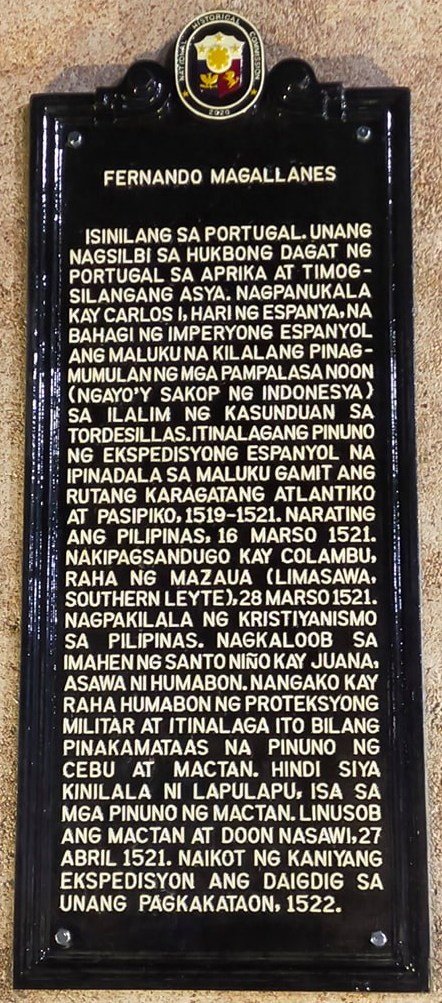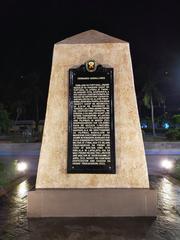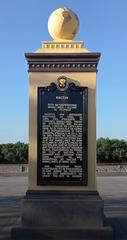
Visiting Mactan Shrine: Hours, Tickets, and Historical Insights
Date: 19/07/2024
Introduction
The Mactan Shrine, nestled in Lapu-Lapu City on Mactan Island, Cebu, is one of the Philippines’ most significant historical landmarks. This iconic site honors the Battle of Mactan, a pivotal event that took place on April 27, 1521, where local chieftain Lapu-Lapu and his warriors famously defeated the Portuguese explorer Ferdinand Magellan, marking the first recorded resistance against Spanish colonization. The shrine, featuring a towering bronze statue of Lapu-Lapu and other monuments, serves as a symbol of Filipino bravery and resilience (National Historical Commission of the Philippines).
Visiting the Mactan Shrine offers a unique blend of historical education, cultural symbolism, and an opportunity to engage with the rich heritage of the Philippines. Ideal for history enthusiasts and casual travelers alike, the site provides a comprehensive glimpse into the nation’s past while celebrating the spirit of independence and resistance that defines Filipino identity (Philippine Information Agency). This guide will explore the shrine’s history, cultural importance, visitor information, travel tips, and additional attractions, ensuring a well-rounded and enriching visit.
Table of Contents
- Introduction
- History of Mactan Shrine
- Cultural Symbolism
- Visitor Information
- Educational Value
- Tourism and Economic Impact
- Commemorative Events
- Architectural and Artistic Significance
- Preservation and Conservation Efforts
- Community Engagement
- Accessibility and Visitor Experience
- Future Developments
- FAQ
- Conclusion
History of Mactan Shrine
Pre-Colonial Mactan
Before the arrival of the Spanish, Mactan Island was inhabited by native Filipinos. The island’s strategic location made it a thriving community of seafarers and traders.
Battle of Mactan
The Battle of Mactan on April 27, 1521, marked a significant event in Philippine history. Local chieftain Lapu-Lapu and his warriors defeated Portuguese explorer Ferdinand Magellan and his Spanish forces. This battle is celebrated as the first recorded resistance against Spanish colonization, symbolizing Filipino bravery and resilience (National Historical Commission of the Philippines).
Cultural Symbolism
Lapu-Lapu is revered as a national hero in the Philippines. The Mactan Shrine serves as a cultural symbol of Filipino identity and pride. The monument features a bronze statue of Lapu-Lapu, standing 20 meters tall, which was erected in 1933. This statue is not only a tribute to Lapu-Lapu’s heroism but also a representation of the Filipino spirit of independence and resistance against foreign domination (Philippine Information Agency).
Visitor Information
Ticket Prices
Visiting the Mactan Shrine is free of charge. There is no entrance fee, making it an affordable destination for both local and international tourists.
Opening Hours
The Mactan Shrine is open to the public year-round, typically from 8:00 AM to 5:00 PM, providing ample time to explore the site.
Educational Value
The Mactan Shrine is an educational site that provides visitors with a deeper understanding of Philippine history and culture. The shrine includes a museum that houses artifacts and exhibits related to the Battle of Mactan and the early history of the Philippines. These exhibits offer valuable insights into the pre-colonial period and the impact of Spanish colonization on the archipelago (National Museum of the Philippines).
Tourism and Economic Impact
The Mactan Shrine is a major tourist attraction in Cebu, drawing thousands of visitors each year. Tourism at the shrine significantly contributes to the local economy, providing income for local businesses and creating jobs for residents. The site is part of the larger Mactan Island tourism circuit, which includes other attractions such as the Mactan Island Aquarium and the Cebu Happy World Museum (Department of Tourism).
Commemorative Events
The Mactan Shrine is the focal point of annual commemorative events, particularly the Kadaugan sa Mactan (Victory at Mactan) festival. This festival, held every April, features reenactments of the Battle of Mactan, cultural performances, and various community activities. These events not only celebrate the historical significance of the battle but also promote cultural heritage and community spirit (Cebu Provincial Government).
Architectural and Artistic Significance
The design and architecture of the Mactan Shrine are also noteworthy. The shrine complex includes several structures and monuments, each with its own artistic and historical value. The main statue of Lapu-Lapu is a masterpiece of bronze sculpture, while the surrounding gardens and pathways are designed to enhance the visitor experience. The site also features a memorial marker for Ferdinand Magellan, acknowledging his role in the historical events that took place on Mactan Island (Cebu City Tourism Office).
Preservation and Conservation Efforts
Efforts to preserve and conserve the Mactan Shrine are ongoing. The site is maintained by the National Historical Commission of the Philippines, which ensures that the monuments and exhibits are kept in good condition. Conservation projects include regular maintenance, restoration of damaged structures, and the implementation of measures to protect the site from environmental and human-induced damage (National Historical Commission of the Philippines).
Community Engagement
The Mactan Shrine plays a vital role in community engagement and education. Local schools often organize field trips to the shrine, providing students with an opportunity to learn about their heritage in an interactive setting. Community groups also participate in the upkeep and promotion of the site, fostering a sense of ownership and pride among residents (Lapu-Lapu City Government).
Accessibility and Visitor Experience
The Mactan Shrine is easily accessible to visitors, located just a short drive from Mactan-Cebu International Airport. Visitor amenities include guided tours, souvenir shops, and food stalls, ensuring a comfortable and enjoyable experience for all (Cebu City Tourism Office).
Future Developments
Plans for future developments at the Mactan Shrine include the expansion of the museum and the addition of new exhibits and interactive displays. These developments aim to enhance the educational value of the site and attract more visitors. The local government is also exploring partnerships with private organizations to fund these projects and ensure the long-term sustainability of the shrine (Lapu-Lapu City Government).
FAQs
What are the Mactan Shrine’s visiting hours?
The Mactan Shrine is open from 8:00 AM to 5:00 PM daily.
Is there an entrance fee for the Mactan Shrine?
No, visiting the Mactan Shrine is free of charge.
Are there guided tours available at the Mactan Shrine?
Yes, guided tours are available to enhance your visitor experience.
What are some nearby attractions?
Nearby attractions include the Mactan Island Aquarium and the Cebu Happy World Museum.
Conclusion
In conclusion, the Mactan Shrine stands as a testament to the courage and resilience of the Filipino people. This historical landmark not only commemorates the Battle of Mactan and the heroism of Lapu-Lapu but also serves as an educational and cultural beacon for visitors. With no entrance fee and year-round accessibility, it is an inclusive destination that welcomes everyone to explore and learn about a crucial chapter in Philippine history (National Museum of the Philippines). The site’s significance is further amplified by annual events like the Kadaugan sa Mactan festival, which celebrates the historic victory and promotes cultural heritage (Cebu Provincial Government).
Efforts to preserve and enhance the Mactan Shrine continue to ensure that future generations can also appreciate its historical and cultural value. By visiting the shrine, you not only engage with the past but also support local tourism and the broader community. For a memorable experience, plan your visit to the Mactan Shrine and immerse yourself in the rich tapestry of Filipino history and culture (Lapu-Lapu City Government). Stay informed about updates and future developments by following us on social media or visiting our website.
References
- Visiting the Mactan Shrine - History, Tickets, and Travel Tips (2024). National Historical Commission of the Philippines
- Visiting the Mactan Shrine - History, Tickets, and Tips for Exploring Cebu’s Historical Landmark (2024). Philippine Information Agency
- Ultimate Guide to Visiting Mactan Shrine - Hours, Tickets, and Tips (2024). National Museum of the Philippines
- Ultimate Guide to Visiting Mactan Shrine - Hours, Tickets, and Tips (2024). Cebu Provincial Government
- Ultimate Guide to Visiting Mactan Shrine - Hours, Tickets, and Tips (2024). Lapu-Lapu City Government





